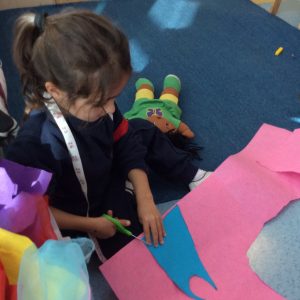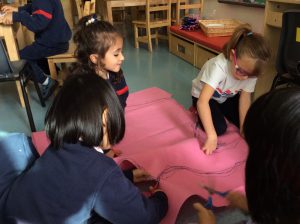Written by Veronica Martin (ECE Coordinator)
K4B Fabric and Cloth – Project Learning in the ECE
Have you ever wondered how the ECE classes come up with the projects that the children study and learn about? Projects always come from the interest of the child. If we can use their own interest and motivation to drive the learning, then education becomes fun.
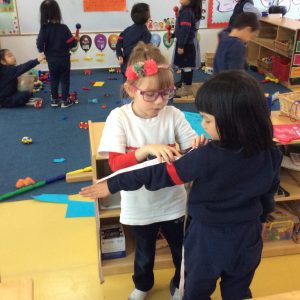 Recently K4B had shown an interest in clothes making. Read on to discover the step-by-step learning process of this class’s project about Fabric and Cloth.
Recently K4B had shown an interest in clothes making. Read on to discover the step-by-step learning process of this class’s project about Fabric and Cloth.
When children are eager to learn about a topic then the ideas and suggestions often come from them. As they share their own experiences and ideas, a project may develop. Projects are investigations of high-interest topics that typically have different phases. The teachers guide the children through each phase and introduce the learning and educational opportunities as each idea develops.
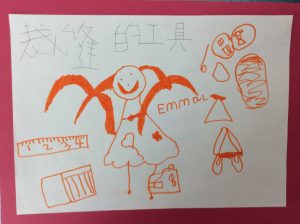 In the beginning phase, the children represent their prior experiences through drawing, storytelling, or dramatic play. For example, K4B children were using clothes to dress dolls, create outfits for role-play and using different textured materials in the room. At the end of this phase, the children and teachers will make a list of all the things they want to find out about the topic. K4B children were interested in how clothing was made.
In the beginning phase, the children represent their prior experiences through drawing, storytelling, or dramatic play. For example, K4B children were using clothes to dress dolls, create outfits for role-play and using different textured materials in the room. At the end of this phase, the children and teachers will make a list of all the things they want to find out about the topic. K4B children were interested in how clothing was made.
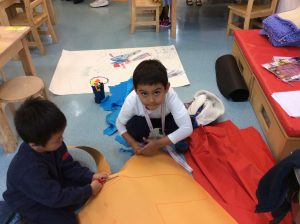 During the next phase, the children will do research to find the answers to their questions. They use many methods to do this research. For example, they use information from books, interview experts on the topic, and do observational drawings to learn more about the topic under investigation.
During the next phase, the children will do research to find the answers to their questions. They use many methods to do this research. For example, they use information from books, interview experts on the topic, and do observational drawings to learn more about the topic under investigation.
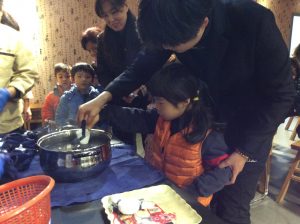 For the clothes project, the teachers arranged a tailor to visit the class. She showed the children how to select the materials, make measurements and create an outfit. This then spurred the children on to make their own. The children all planned out, measured and created their own colourful clothes.
For the clothes project, the teachers arranged a tailor to visit the class. She showed the children how to select the materials, make measurements and create an outfit. This then spurred the children on to make their own. The children all planned out, measured and created their own colourful clothes.
In the final phase, the children celebrated their project with a visit to the Shanghai Textile Museum with their families. Here they learnt more about the history of clothing and how to dye cloth.
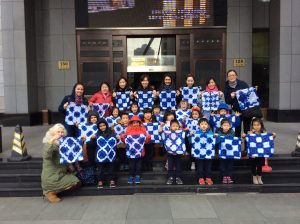 The project on Materials and Fabric lasted a few months, whereas other projects can last only a few days. Projects can involve the whole class or just a small group of children. However, as the project evolves, be assured that this is an effective way to provide your child with opportunities for using and developing knowledge, skills, and abilities.
The project on Materials and Fabric lasted a few months, whereas other projects can last only a few days. Projects can involve the whole class or just a small group of children. However, as the project evolves, be assured that this is an effective way to provide your child with opportunities for using and developing knowledge, skills, and abilities.
